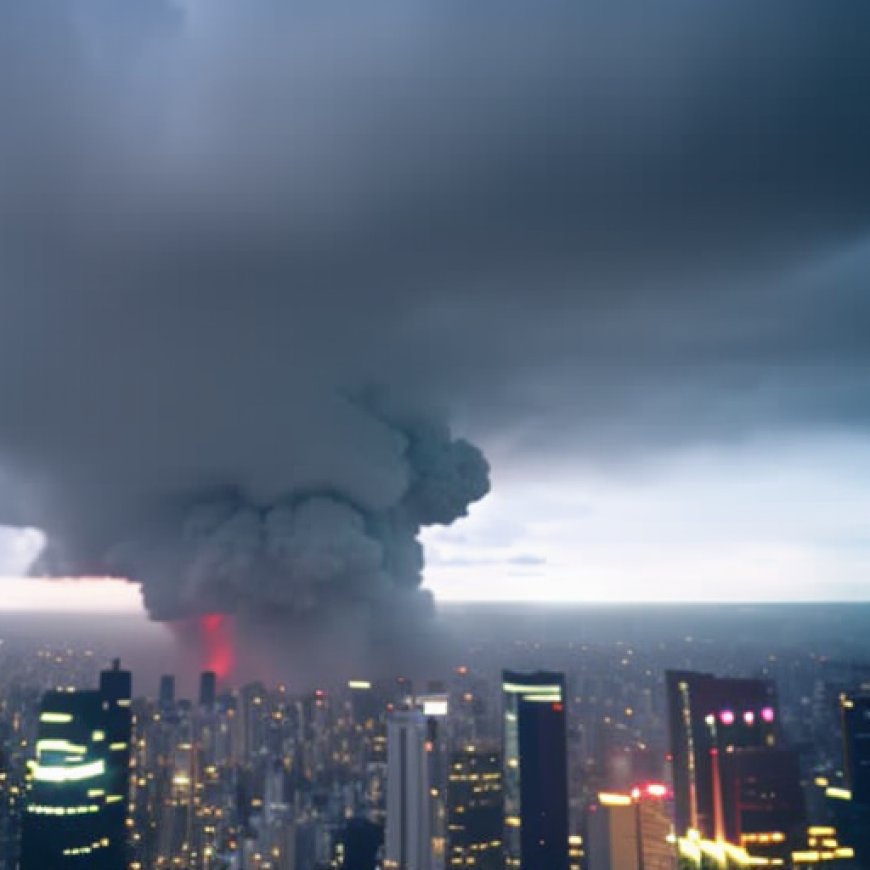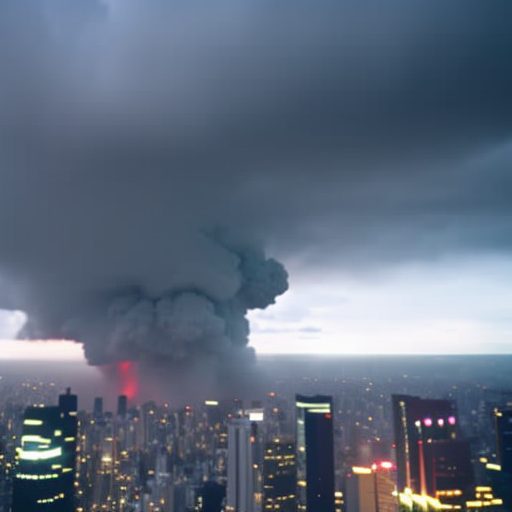WMO report: Asia hit hardest by climate change and extreme weather
WMO report: Asia hit hardest by climate change and extreme weather UN News


State of the Climate in Asia 2023 Report Highlights Accelerating Rate of Climate Change
Following close on the heels of the study of climate change in Europe, published by WMO on Monday, the State of the Climate in Asia 2023 report highlighted the accelerating rate of climate change across several indicators such as surface temperature, glacier retreat, sea level rise and more.
“The report’s conclusions are sobering. Many countries in the region experienced their hottest year on record in 2023, along with a barrage of extreme conditions, from droughts and heatwaves to floods and storms,” said Celeste Saulo, WMO Secretary-General.
Climate change has exacerbated the frequency and severity of such events that profoundly impact societies, economies, and, most importantly, human lives, she underscored.
Faster than average
With the warming trend almost doubling since the period from 1960–1990, Asia is heating up faster than the global average, with increased casualties and economic losses from floods, storms, and more severe heatwaves.
In 2023, sea-surface temperatures in the northwest Pacific Ocean were the highest on record. Even the Arctic Ocean suffered a marine heatwave. In many areas of the region, including the Arabian Sea, the southern Kara Sea, and the southeastern Laptev Sea, the sea surface is warming more than three times faster than globally. The Barents Sea was identified by the report as a “climate change hotspot”.
Driven by thermal expansion and the melting of glaciers, ice caps and ice sheets, sea level continued to rise globally. However, in Asia, rates were higher than the global mean over 1993–2023.
Last year, the continent (just to vary the language) saw 79 water hazard-related disasters, with over 80 per cent linked to floods and storms, resulting in over 2,000 fatalities and affecting nine million people directly, according to the Emergency Events Database.
Temperatures up, precipitation down
Many parts of the region experienced extreme heat in 2023. Asia’s annual mean near-surface temperature ranked as the second highest on record with 0.91 °C above the 1991–2020 average. Particularly high temperatures were observed from western Siberia to central Asia, and from eastern China to Japan. Japan and Kazakhstan experienced a record warm year.
Meanwhile, the level of precipitation was below normal in large parts of the Turan Lowland (Turkmenistan, Uzbekistan, Kazakhstan), the Hindu Kush (Afghanistan, Pakistan) and the Himalayas, as well as around the Ganges and lower course of the Brahmaputra Rivers (India and Bangladesh).
The Arakan Mountains in Myanmar and the lower course of the Mekong River areas have also seen less rainfall than usual, while Southwest China suffered from a drought, with below-normal precipitation levels nearly every month of 2023.
Despite overall lower precipitation, several extreme events occurred, such as heavy rainfall in Myanmar in May; floods and storms across India, Pakistan, and Nepal in June and July, and record hourly rainfall in Hong Kong in September, to name a few.
Retreating glaciers and receding permafrost
Home to the largest volume of ice outside of the polar regions, the High-Mountain Asia region with the Tibetan Plateau at its centre has approximately 100,000 square kilometres of glaciers. Over the last several decades, most of those have been retreating, and at an accelerating rate. Twenty out of 22 observed glaciers continued losing mass, yielding to record-breaking high temperatures and dry conditions.

Glaciers in the Everest region are melting at an unprecedented rate.
Permafrost – soil that continuously remains below 0 °C for two or more years – is also surrendering territories to the increasing air temperatures in the Arctic. The most rapid thawing of permafrost in Asia is observed in the Polar Urals and the western regions of Western Siberia.
Severe dust storms, lightning and thunders, waves of extreme cold and thick smog were also among extreme events that affected the lives of millions across Asia.
Early warning for all
The report shows that from 1970 to 2021, there were 3,612 disasters attributed to weather, climate and water extremes, with 984,263 deaths and $1.4 trillion in economic losses. The region accounted for 47 per cent of all reported deaths caused by natural disasters worldwide, with tropical cyclones as the leading cause of reported deaths.
To mitigate these impacts, the WMO and its partners advocate for a strong early warning and disaster risk reduction system to save lives and prevent future economic crises exacerbated by climate change.
“Early warning and better preparedness saved thousands of lives,” said Armida Salsiah Alisjahbana, Executive Secretary of the UN Economic and Social Commission for Asia and the Pacific (ESCAP), which partnered in producing the report.
“ESCAP and WMO, working in partnership, will continue to invest in raising climate ambition and accelerating the implementation of sound policy, including bringing an early warning to all in the region so that no one is left behind as our climate change crisis continues to evolve,” she assured.
SDGs, Targets, and Indicators
| SDGs | Targets | Indicators |
|---|---|---|
| SDG 13: Climate Action | 13.1: Strengthen resilience and adaptive capacity to climate-related hazards and natural disasters | – Number of deaths, missing persons, and directly affected people attributed to climate-related disasters – Economic losses attributed to climate-related disasters |
| SDG 11: Sustainable Cities and Communities | 11.5: Reduce the number of deaths and the number of people affected and substantially decrease the direct economic losses relative to global gross domestic product (GDP) caused by disasters, including water-related disasters, with a focus on protecting the poor and people in vulnerable situations | – Number of deaths, missing persons, and directly affected people attributed to water-related disasters – Economic losses attributed to water-related disasters |
| 11.b: Substantially increase the number of cities and human settlements adopting and implementing integrated policies and plans towards inclusion, resource efficiency, mitigation and adaptation to climate change, resilience to disasters, and develop and implement, in line with the Sendai Framework for Disaster Risk Reduction 2015-2030, holistic disaster risk management at all levels | – Number of cities and human settlements with implemented policies and plans for climate change adaptation and disaster risk reduction | |
| SDG 6: Clean Water and Sanitation | 6.4: By 2030, substantially increase water-use efficiency across all sectors and ensure sustainable withdrawals and supply of freshwater to address water scarcity and substantially reduce the number of people suffering from water scarcity | – Number of people suffering from water scarcity |
| SDG 15: Life on Land | 15.1: By 2020, ensure the conservation, restoration, and sustainable use of terrestrial and inland freshwater ecosystems and their services, in particular forests, wetlands, mountains, and drylands, in line with obligations under international agreements | – Extent of forest area, wetland area, and mountain area protected |
| SDG 1: No Poverty | 1.5: By 2030, build the resilience of the poor and those in vulnerable situations and reduce their exposure and vulnerability to climate-related extreme events and other economic, social, and environmental shocks and disasters | – Number of people in poverty affected by climate-related extreme events |
1. Which SDGs are addressed or connected to the issues highlighted in the article?
SDG 13: Climate Action
The article primarily addresses the issue of climate change and its impacts on various indicators such as surface temperature, glacier retreat, sea level rise, extreme weather events, and their consequences on societies and economies. SDG 13 specifically focuses on taking urgent action to combat climate change and its impacts.
SDG 11: Sustainable Cities and Communities
The article also highlights the impacts of climate change on cities and human settlements in Asia, including floods, storms, and water-related disasters. SDG 11 aims to make cities and human settlements inclusive, safe, resilient, and sustainable.
SDG 6: Clean Water and Sanitation
The article mentions the impact of climate change on water resources, including water scarcity and below-normal precipitation levels. SDG 6 focuses on ensuring availability and sustainable management of water and sanitation for all.
SDG 15: Life on Land
The article discusses the retreat of glaciers and the thawing of permafrost, which are impacting terrestrial ecosystems in the High-Mountain Asia region. SDG 15 aims to protect, restore, and sustainably use terrestrial ecosystems.
SDG 1: No Poverty
The article mentions the vulnerability of the poor and those in poverty to climate-related extreme events and other shocks. SDG 1 aims to eradicate poverty and reduce vulnerabilities to economic, social, and environmental shocks.
2. What specific targets under those SDGs can be identified based on the article’s content?
SDG 13: Climate Action
Target 13.1: Strengthen resilience and adaptive capacity to climate-related hazards and natural disasters.
SDG 11: Sustainable Cities and Communities
Target 11.5: Reduce the number of deaths and the number of people affected and substantially decrease the direct economic losses relative to global GDP caused by disasters, including water-related disasters, with a focus on protecting the poor and people in vulnerable situations.
Target 11.b: Substantially increase the number of cities and human settlements adopting and implementing integrated policies and plans towards inclusion, resource efficiency, mitigation and adaptation to climate change, resilience to disasters, and develop and implement holistic disaster risk management at all levels.
SDG 6: Clean Water and Sanitation
Target 6.4: By 2030, substantially increase water-use efficiency across all sectors and ensure sustainable withdrawals and supply of freshwater to address water scarcity and substantially reduce the number of people suffering from water scarcity.
SDG 15: Life on Land
Target 15.1: By 2020, ensure the conservation, restoration, and sustainable use of terrestrial and inland freshwater ecosystems and their services, in particular forests, wetlands, mountains, and drylands, in line with obligations under international agreements.
SDG 1: No Poverty
Target 1.5: By 2030, build the resilience of the poor and those in vulnerable situations and reduce their exposure and vulnerability to climate-related extreme events and other economic, social, and environmental shocks and disasters.
3. Are there any indicators mentioned or implied in the article that can be used to measure progress towards the identified targets?
Yes, there are indicators mentioned or implied in the article that can be used to measure progress towards the identified targets:
- Number of deaths, missing persons, and directly affected people attributed to climate-related disasters
- Economic losses attributed to climate-related disasters
- Number of deaths, missing persons, and directly affected people attributed to water-related disasters
- Economic losses attributed to water-related disasters
- Behold! This splendid article springs forth from the wellspring of knowledge, shaped by a wondrous proprietary AI technology that delved into a vast ocean of data, illuminating the path towards the Sustainable Development Goals. Remember that all rights are reserved by SDG Investors LLC, empowering us to champion progress together.
Source: news.un.org

Join us, as fellow seekers of change, on a transformative journey at https://sdgtalks.ai/welcome, where you can become a member and actively contribute to shaping a brighter future.







